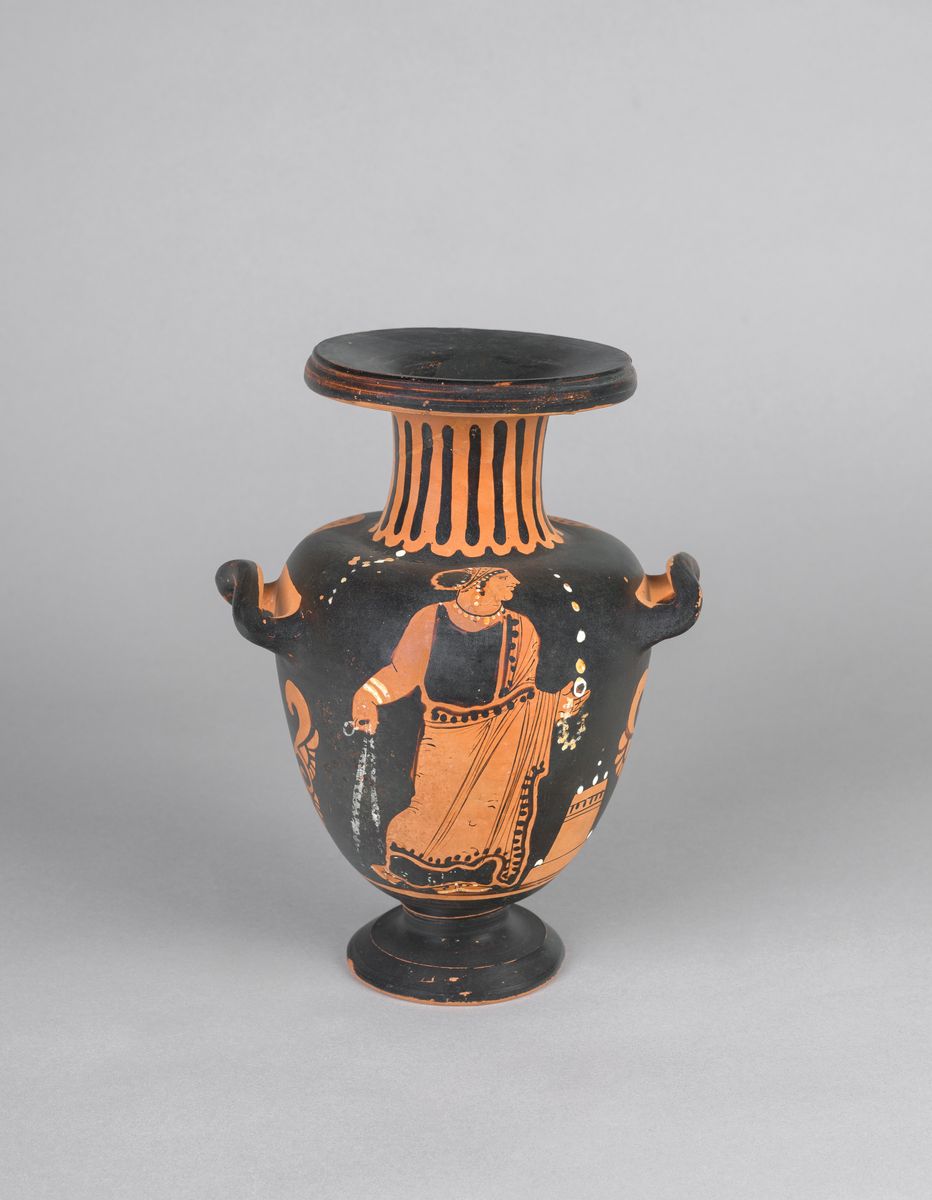Water jar (hydria) with a woman bringing offerings to a tomb
Artist:
Workshop of Asteas and Python
Place made:Paestum
Culture: South Italian
Date: ca. 330 B.C.
Medium: Terracotta, red-figure technique
Dimensions:
height: 9 in. (22.9 cm)
width incl. handles: 6 3/4 in. (17.2 cm)
max. diameter excl. handles: 5 1/2 in. (14 cm)
diameter of mouth: 4 5/16 in. (11 cm)
diameter of foot: 3 1/8 in. (8 cm)
Credit Line: San Antonio Museum of Art, gift of Gilbert M. Denman, Jr.
Object number: 86.134.190
Provenance: Sotheby's, London, July 9-10, 1984, lot 341. Sold by Charles Ede, London, to Gilbert M. Denman, Jr. (1921-2004), San Antonio, 1985; Gilbert M. Denman, Jr., by gift to San Antonio Museum of Art, 1986.
Published References
Sotheby's London, 9-10 July 1984, lot 341
A. D. Trendall, Red-figured Vases of Paestum (British School at Rome, 1987) 197, no. 530, pl. 134h
H.A. Shapiro, C.A. Picón, and G.D. Scott, III, eds., Greek Vases in the San Antonio Museum of Art (San Antonio, 1995) p. 240, no. 121
Label Text
A woman holding a fillet and a wreath stands next to a small stele. (Jessica Powers 2008)
The chief Paestan vase-painter was Asteas, known to us from eleven signed vases, of which the San Antonio Museum of Art possesses two. He and his slightly junior colleague Python, who signed two extant vases, were the principals of a large workshop from which more than 1,000 vases survive. The principal scene on this calyx krater (Side A) gives a vivid representation of the story of Telephos and the infant Orestes. (Previous label)
The chief Paestan vase-painter was Asteas, known to us from eleven signed vases, of which the San Antonio Museum of Art possesses two. He and his slightly junior colleague Python, who signed two extant vases, were the principals of a large workshop from which more than 1,000 vases survive. The principal scene on this calyx krater (Side A) gives a vivid representation of the story of Telephos and the infant Orestes. (Previous label)
On view
In Collection(s)
The San Antonio Museum of Art is in the process of digitizing its permanent collection. This electronic record was created from historic documentation that does not necessarily reflect SAMA's complete or current knowledge about the object. Review and updating of such records is ongoing.











 This resource has been made possible in part by the National Endowment for the Humanities: Exploring the Human Endeavor.
This resource has been made possible in part by the National Endowment for the Humanities: Exploring the Human Endeavor.
